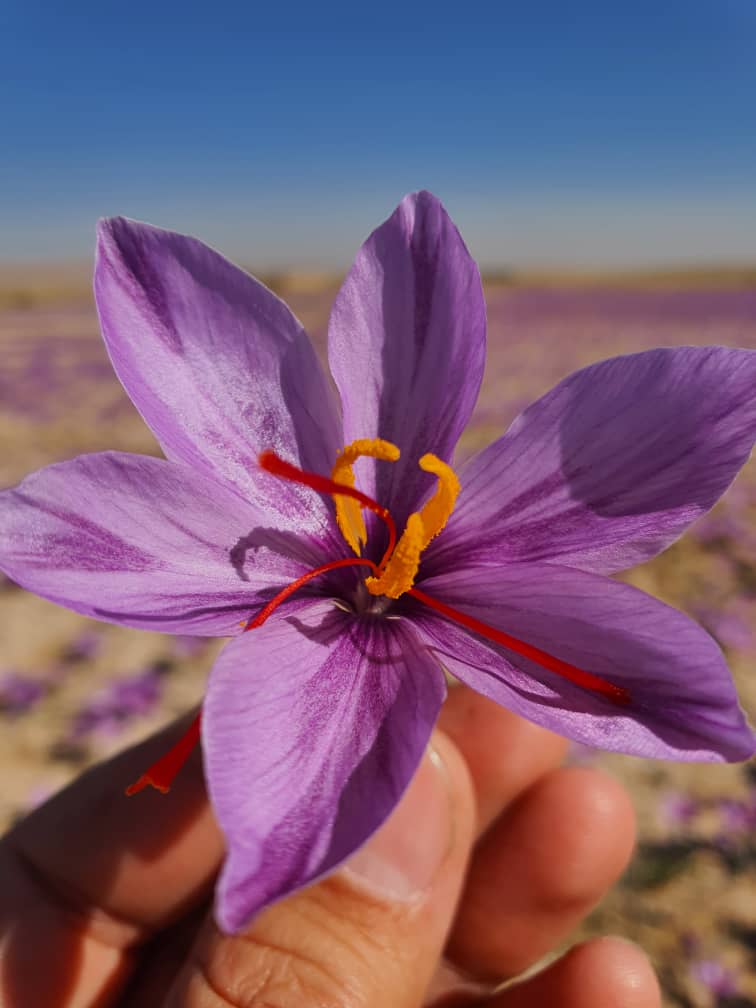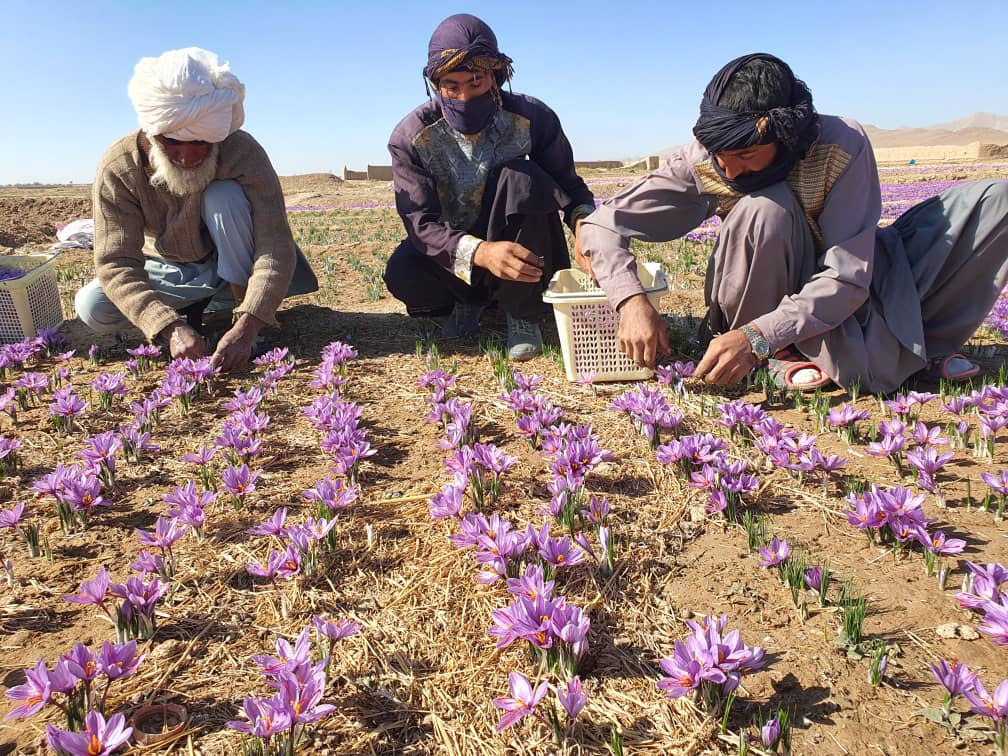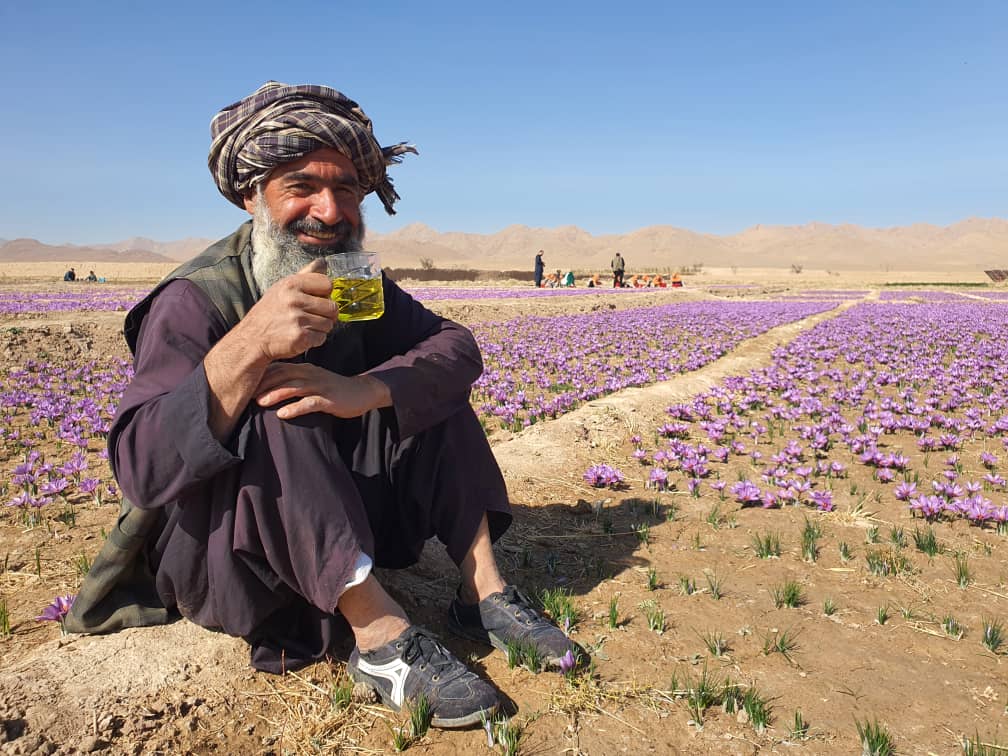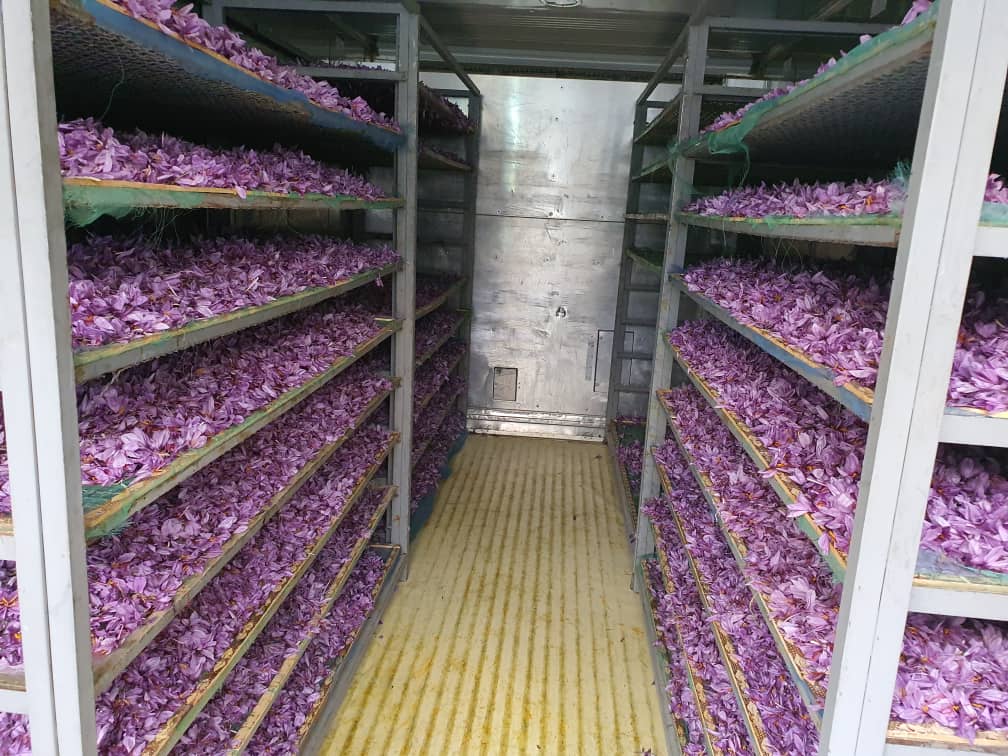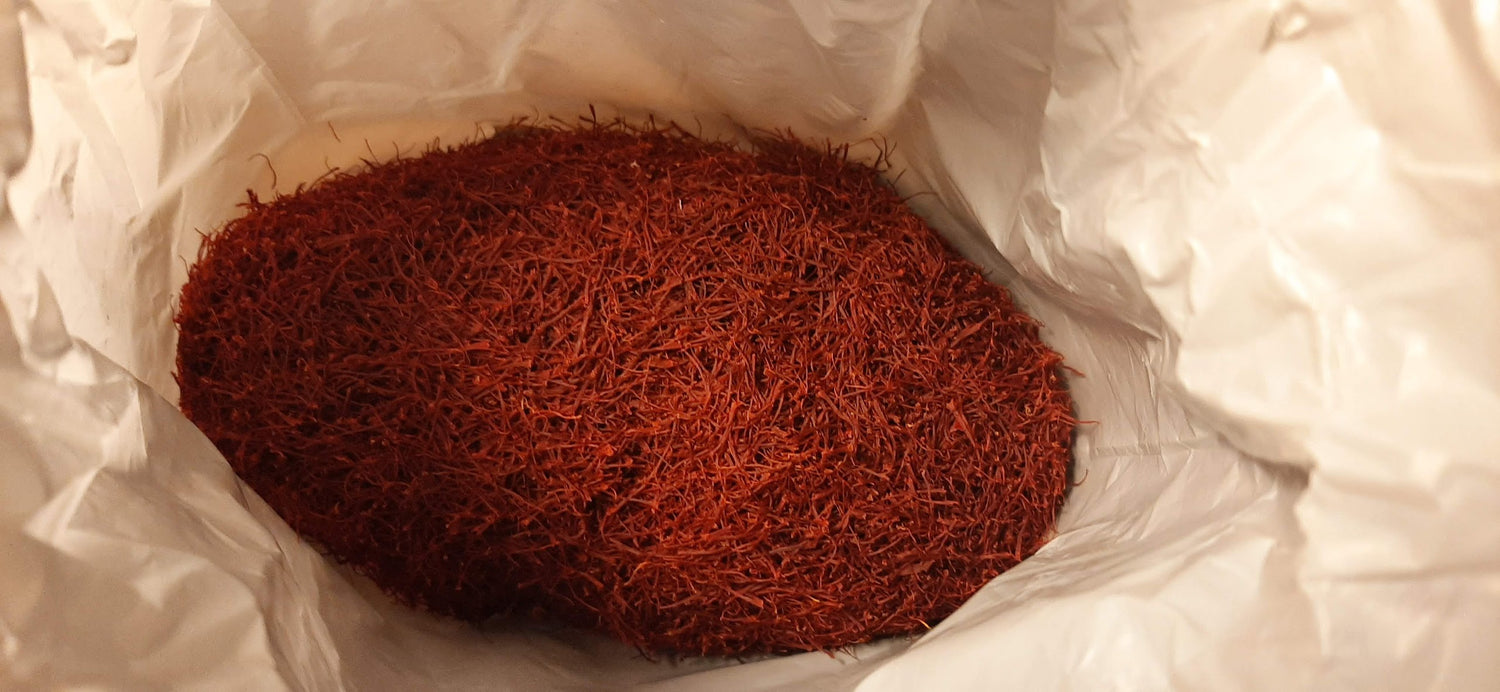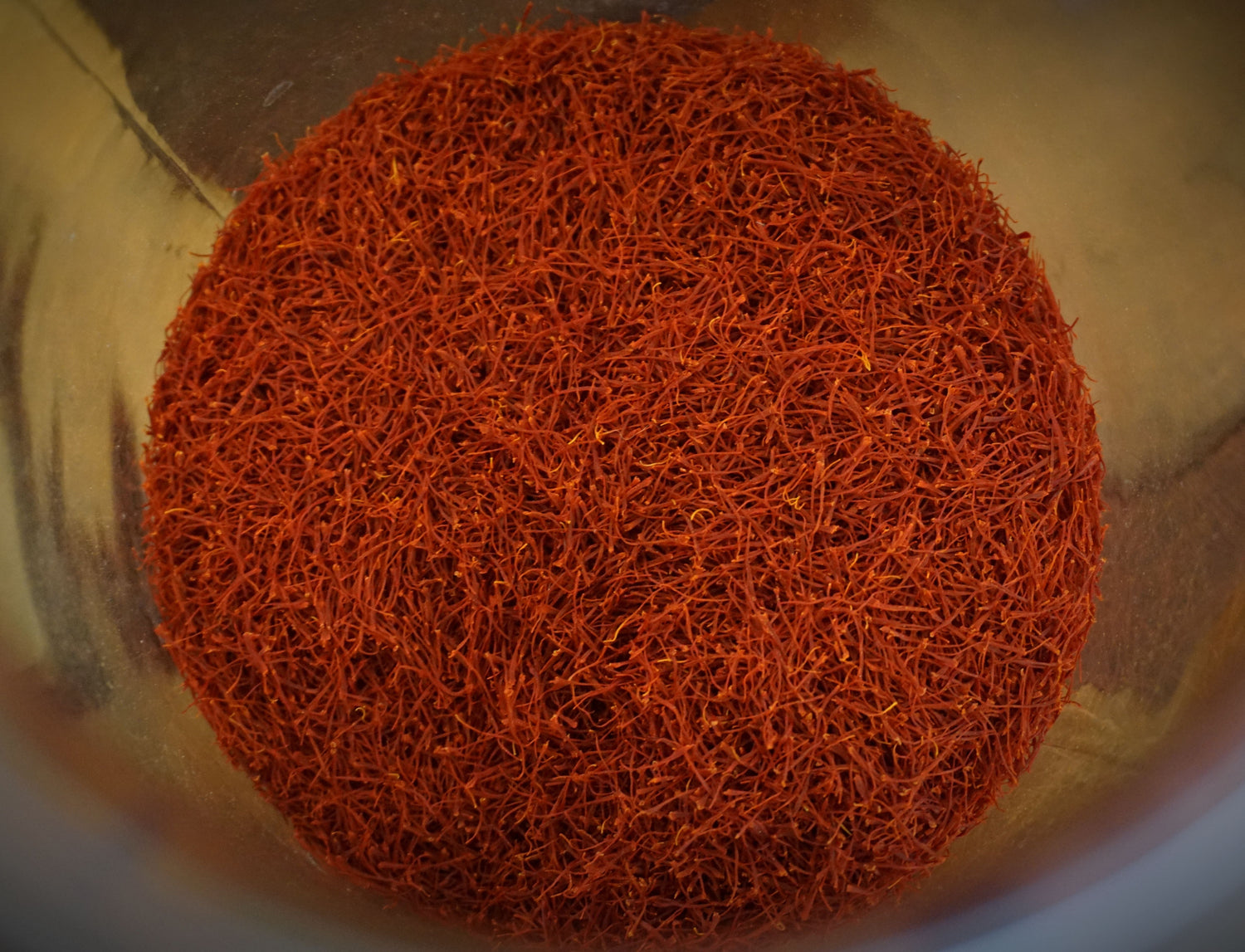Our Royal Saffron Production
In the early 2000’s a dear friend of me from earlier study days contacted me to share a bit about his current projects in his native Hindu Kush. Returning for the first time after 15 years, a a few years before, he found his family estate completely destroyed, just as most of the area, devastated by warfare, and a bad string of natural calamities. To cut a long story short (or keep it for a blog note), we started to fieldwork to monitor the needs on different areas, and tried to imagine meaningful small scale projects, like fruits press and all kind of derived products, dry fruits, natural honey making, re-greening barren areas, local cold presses for oil, tree nurseries, fruit orchards, etc.



Projects kept developing, fast forward to the 2010’s and we were invited along by the then National government, alongside with representative of several others actors on the field (National Development agencies, NGOS in a collaborative process reflexion to imagine sustainable projects in rural areas not only for subsistence or local use and purpose, but for high added value and export potential The idea was both to improve economical conditions but also of course to create natural competition for poppy/opium and offer genuine alternatives to these poor rural areas, not just repression or restrictions.
We discussed and researched different ideas. Saffron became one of the promising leads everyone agreed was worth developing, as it makes great sense. First there are areas of the country having the perfect climatic and geologic conditions. Then there is increasing demand both in Asia (economic growth) and worldwide. And saffron production has shifted away (or morphed into a patrimonial or luxury niche activity) from countries with developed economies due to the interaction of high labour costs and the labour-intensive nature of saffron production.

Being ourselves enamoured with Saffron, and having had experience with it in Europe, we imagined the challenge of growing the best possible Saffron locally, with the general philosophy we always work with for all our project: ecologically and socially positive impacts for reconstruction of the quality of life and the environment, equipment and knowledge transfer, and prime focus on quality not on reducing costs or maximizing productivity.
We identified mountainous villages through the kinship networks of my partner, where we could work with full trust, and started the project. We selected only previously virgin land and fields. We helped build up the whole chain of cultivation, harvest, drying according to Swiss standards of quality and hygiene, in several villages and buy their production.
We monitor our production at all stages: from the villagers who grow the crocus to the people of condition it (still in the villages). All the fields had been virgin prior to saffron cultivation. We have established the transfer of know-how and equipment (field work, drying and conditioning) for the production to be swiss standards and quality, and we keep monitoring the consistency in quality.
We differentiate and record each batch, by villages and producers and we track that up to the end clients in case there ever is a problem (there never has been but in case an accident ever happens). All the villages have a strong presence of people connected to my partner via kinship links so nobody would ever cheat. Respect / honour is more important than life in those mountains.). As we extend the sales over the years we help other farmers / villages to get the (free) training & setting up help to be able to join the production network, when they are ready and can produce the required quality.
The Saffron is of exceptional quality, much higher in crocine, picrocrocin, safranal, lanierone & other key components than what is too often sold under the negin / sargol (top Iranian grades) or EU class I or other “red thread only” grades.
Iran being the first producer of Saffron worldwide, my Pashto partner takes special pride in the fact that our Saffron is often bought by members of the Iranian nobility, to be offered as a distinctive gift back home.

You will possibly find red thread / class I / negin saffron offered for less (and for more). We do not compare, but what we do is provide an uncompromising attention to detail, and a commitment to the excellence of the purity, quality and traceability of the saffron we deliver, which we guarantee. We are confident in saying it is the best quality one can produce.
Some of the reasons is that, contrary to many providers, we don’t try to artificially maintain a degree of humidity to gain weight for sales (or worst, boost it a few percents, a common cheating strategy, which terribly degrades the saffron quality, longevity and fragrance). Our saffron thread are genuinely dry, which is the best for curing and long term conservation, and of course the best value for money.
Our Saffron is also distinctive is also the lowest possible rate of non aromatic plant material from the base of the threads (< 0.1%) for them to keep their physical integrity, and absolutely no “ash” (the trade term for external parasite non-plant material).
As you know saffron us one of the most adulterated and cheated substances in the world (non exhaustive by far but a rapid overview of cheating techniques here), so our approach based on full traceability from each field and workers who handled the saffron during the drying and conditioning, all the way to our customers is in our eyes extremely important in such an unreliable and dangerous market.
As in the ancestral local culinary traditions, the family who have the means prefer to keep the saffron a few years before using ( for that darkness, dryness and a degree air tightness while storing are necessary). With age saffron, the aroma become much deeper, very tannic and beautifully round. with a color that become deep vibrant dark burgundy. On the other hand, freshly dried saffron has for a few months some very surprising top and floral notes
Like all quality aromatics saffron evolves. We try to manage our stocks so as to to be able to offer for the connoisseurs (or the curious) the possibility to experience these remarkable nuances.
As a perfumer, we also enjoy working saffron in different ways.
You can discover the collection that regroups all of Scentient Nature's saffron-based creations & raw material offerings.

